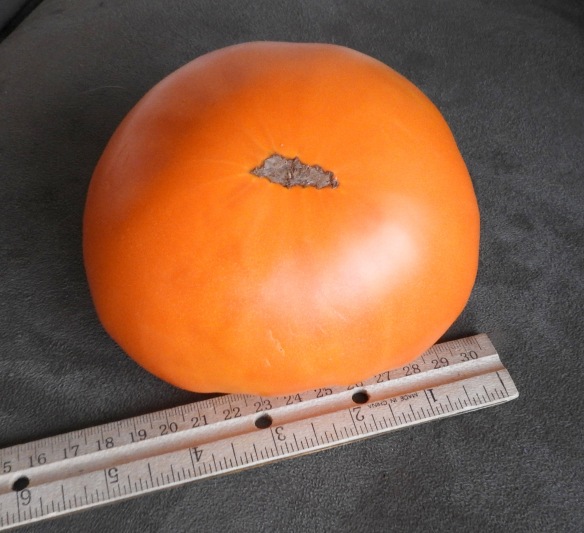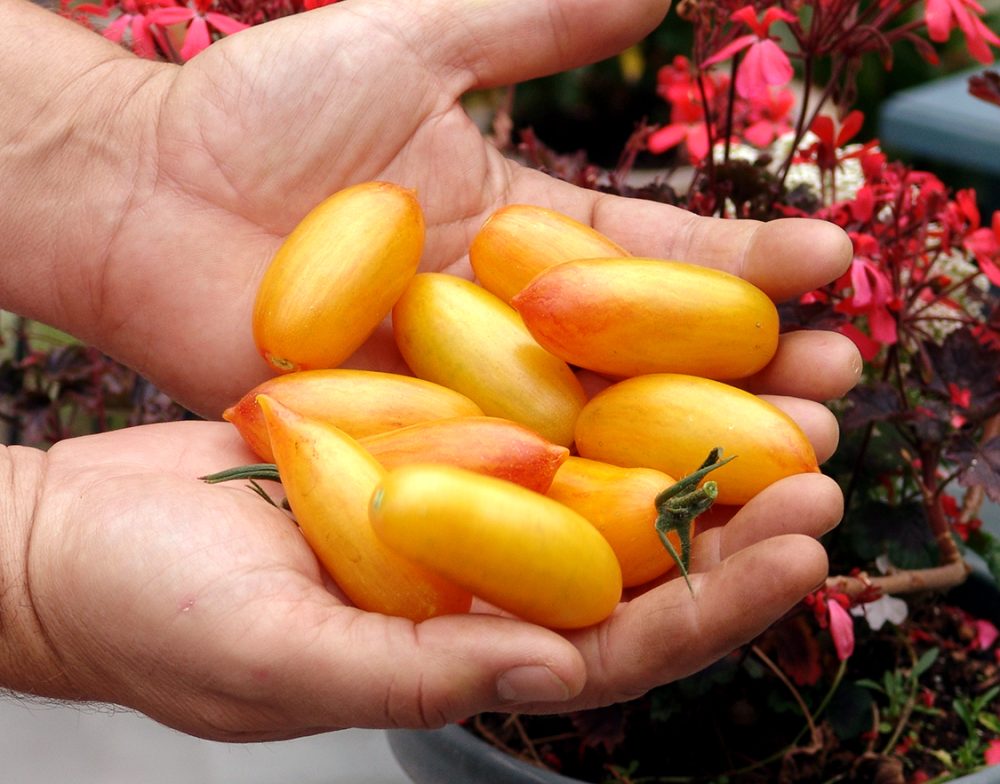
Pink Passion
This is the first picking of tomatoes from one of my Dwarf Tomato Project plants. It is called Pink Passion. A bit blurry, I apologize. Some are slightly heart shaped, pinkish red with yellow, greenish shoulders. They range in size from golf ball to softball. The plant seems to be suffering in this heat, high 90’s.
Tomatoes like heat. To a point. It can cause their flowers to dry up and fall off. It can also cause the green-yellow-orange shoulders. Lycopene, chlorophyll and carotene are all pigments present in tomatoes and work to give them their color.
Lycopene is the pigment that gives the fruit it’s color red. Chlorophyll gives the plants their green color, Carotene gives them their yellow or orange color.
The optimum temperature for lycopene production is between 65 degree and 75 degrees. After 75 degrees, lycopene production slows. The fruit’s exposure to direct sun dictates what happens to its shoulders. As sun strikes tops of tomatoes, temperatures in the fruit rise, inhibiting lycopene causing them to stay green.
Tomatoes may stay green due to chlorophyll, the pigment that gives plants their green color. Excessive heat prevents chlorophyll from breaking down. When subjected to hours of hot sun, chlorophyll hangs on.
Carotene, another pigment in tomatoes, produces yellow and orange. Less affected by heat carotene (yellow) shines through while lycopene (red) is inhibited, thus yellow shoulders.
The part of the tomato most protected from direct exposure to the sun will be the color it is supposed to be.
- This is one of the reason I crowd my plants and grow them up. I try to space them about 2.5 feet apart and use massive tomato cages. Planted in containers, it is more difficult to give them extra leaf coverage. Try placing them where they will get shade in the afternoon when the sun is hottest.
- It is also why I don’t prune. Leaf cover is so important in protecting the tomatoes. It also protects against sunburn, a white flaky patch.
- There are also tomato varieties, usually heirloom, that naturally have green shoulders. I’ve seen them a lot in dark tomatoes such as Japanese Black Triefle and Cherokee Purple.



